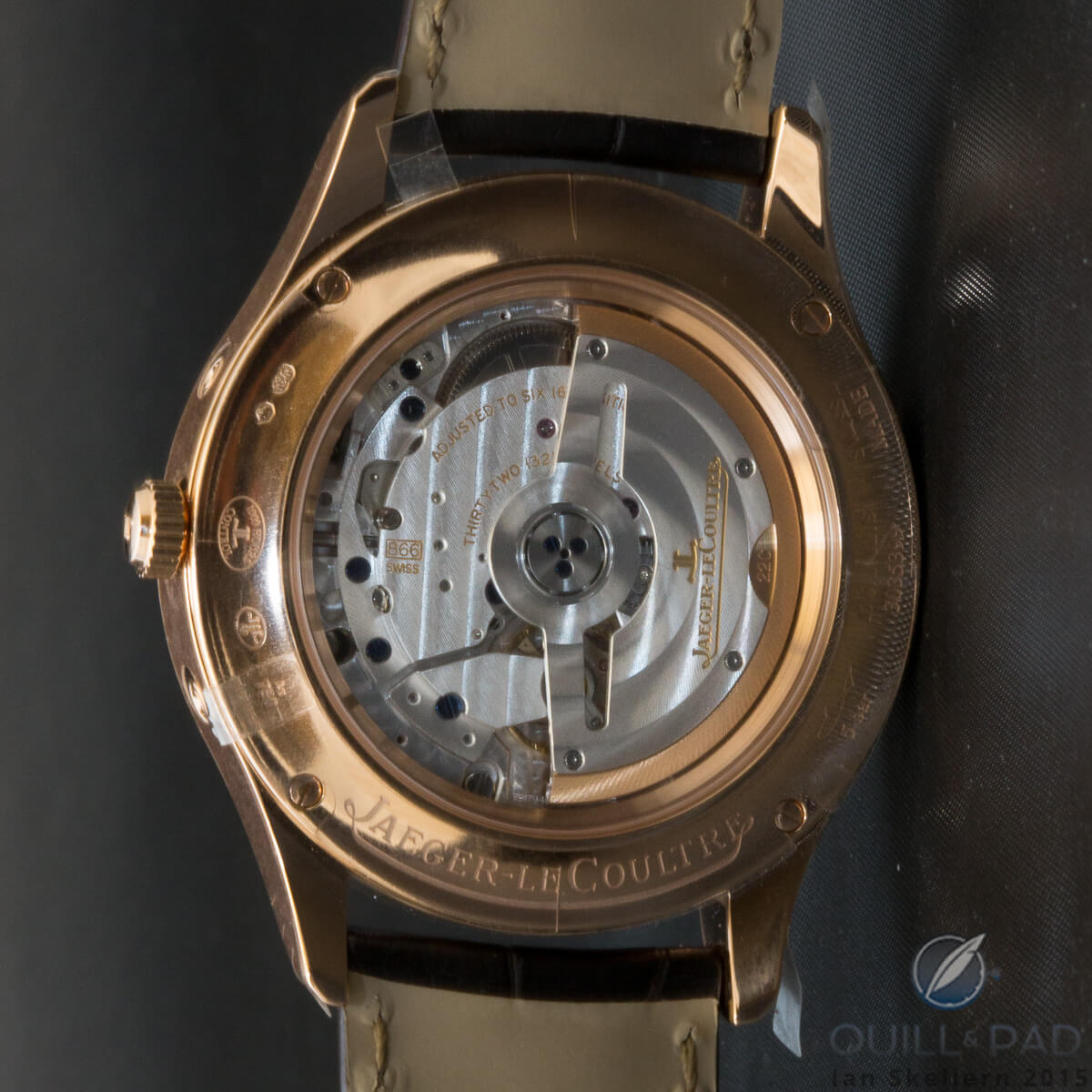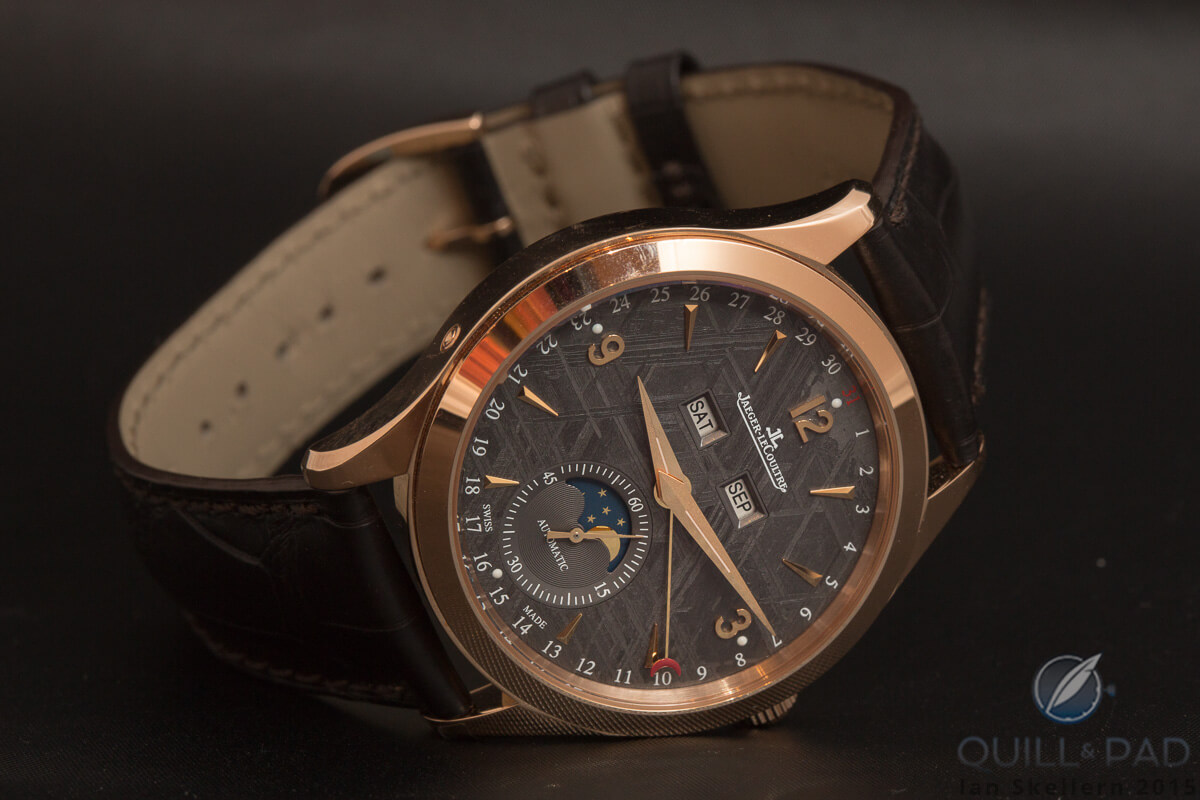During a recent visit to the Jaeger-LeCoultre factory in Le Sentier, product director Stéphane Belmont revealed that watches containing moon phases are always among the brand’s bestselling timepieces.
So, aside from depicting the moon, how else does the new Master Calendar Meteorite fit into Jaeger-LeCoultre’s “year of astronomy” in 2015, which showcases many timepieces with displays revolving around the earth’s satellite?
Belmont, characteristically, has an answer for this, “Wearing meteorite is like having a piece of eternity on the wrist.” It comes from the heavens – an asteroid belt between Mars and Jupiter to be exact.
The stone that the unique dial of the new Master Calendar Meteorite is made from comes from a block of meteorite registered as found in Sweden. As beautiful as it is, it is also hard to work due to its high iron content.
How a “piece of rock” like this becomes a beautiful dial gracing the wrist of a connoisseur is part of an art form rarely seen in watchmaking.
The first step is to scope out the part of the stone that would make for the most beautiful dial. Graining can look much different in various areas of the rock, and it takes a highly trained eye to choose just the right cut for a dial that highlights the beauty of the material just so.
The artisan’s trained eye and hands must have a lot of patience for this type of work.
After the best cut has been determined, the stone goes through a series of processes to make it a dial: cutting and then grinding to the approximate shape is a step that is rather time-consuming. Although it may sound simple, just the initial grinding of the material can take weeks due to its brittleness, and this step requires great care.
The nascent dial is then cemented it to a brass work plate, after which it is ground perfectly flat. This is also a tedious process as tolerances must be precise. After this, the piece is finely ground, polished on one side, and brought to the exact thickness needed.
Precision is a must!
The next steps require a great deal of precision on the part of the artisan, for any mistakes would cause the piece to be thrown away.
Still on a work plate, the future dial is then drilled to accommodate the applied hour markers and display windows.
After the appropriate holes have been made, the meteorite dial is once again polished to remove any blemishes created by drilling and it is then removed from the work plate.
Any slips and the entire dial can be discarded; the artisan would need to start all over.
A shooting star
This beautiful dial has been added to Jaeger-LeCoultre’s Master Calendar, a complete calendar providing a dizzying array of information including a pointer date, weekday, month, and moon phase.
The dial’s displays are extremely well balanced despite the largish number of them, providing a pleasing sense of calm – almost as if you could imagine the long, cold, silent journey that the meteorite took to reach our blue planet millions of years ago from its home near Mars.

View through the display back of the Jaeger-LeCoultre Master Calendar Meteorite to automatic Caliber 866
At 39 x 10 mm, the svelte measurements of the case allow anyone to wear it, male or female, while a sapphire crystal case back allows the wearer to enjoy a view of delicately finished Caliber 866.
Caliber 866 is just one of 1,249 movements this incredible manufacture has developed over the course of its 182-year history.
For more information, please visit www.jaeger-lecoultre.com/master-calendar.
Quick Facts
Case: 39 x 10.6 mm, stainless steel or pink gold
Movement: automatic JLC Caliber 866 with 43 hours power reserve
Dial: meteorite with applied markers and numerals
Functions: hours, minutes, seconds; complete calendar with day, date, month, moon phase
Price: $12,600 (stainless steel) and $24,500 (pink gold)
Trackbacks & Pingbacks
-
[…] For two more gorgeous meteorite-infused timepieces, see Antoine Preziuso’s Stella Polare Tourbillon Muonionalusta Fell From Heaven and Jaeger-LeCoultre Master Calendar Meteorite: It’s Out Of This World! […]
Leave a Reply
Want to join the discussion?Feel free to contribute!



























































Wow, this watch is super beautiful and lovely. Thank you for writing about it! I can’t imagine the work that goes into making something this amazing *_*.
Thanks so much for reading! I, too, was blown away by the beauty of this piece.
These are excellent photos, which are much better than the marketing material supplied by JLC. In fact, this post was the reason that I decided to view the Meteorite (in stainless steel) at the London boutique a few days ago, which I purchased on the spot. It is a stunning piece, and excellent value for money (by the standards of luxury watches). After all, is there any other serious manufacture which produces a piece in this price range with a full calendar, a moonphase and a unique dial (with a diameter under 40mm)? I was concerned that the Meteorite dial would come across as a gimmick, but it certainly does not. Anyway, thanks again for drawing this piece to my attention.
We are very happy to have been of so much help! I was also struck by the beauty of this piece when I first saw it in January and then again in May, and I knew I needed to write about it. Ian’s photos make any story so much better, but it is amazing to know they actually helped you make such an important decision! Thanks for letting us know and enjoy your unique calendar watch.
Did you like the SS or the RG better seeing them up close?
I can’t decide honestly.
And, truly, it is hard to decide between the two! Given the choice, I generally go for steel as a rule, so I would pick that one if I really had to choose.